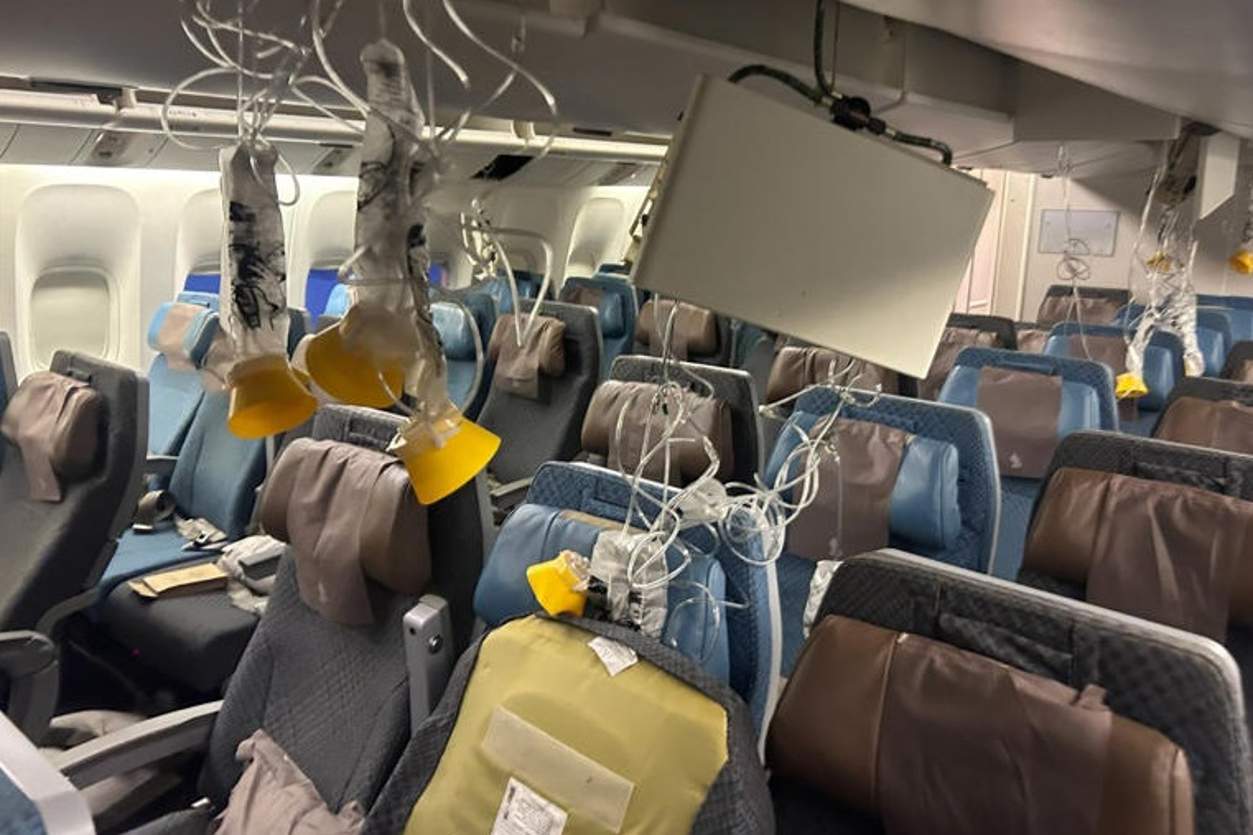A 73-year-old British man was killed during a flight from London to Singapore after the aircraft encountered severe turbulence.
The Singapore Airlines flight, carrying 229 people, plummeted 7,000 feet in six minutes while flying over the west coast of Burma.
The Boeing 777-300ER, which departed from Heathrow shortly after 10 p.m. yesterday, experienced the turbulence 11 hours into its 13-hour journey. At least 30 others were injured, prompting the aircraft to divert to Bangkok, where ambulances awaited.
Singapore Airlines said, “Flight #SQ321 from London (Heathrow) to Singapore on 20 May 2024 encountered severe turbulence en route. We can confirm injuries and one fatality on board,”
Singapore Airlines offers its deepest condolences to the family of the deceased. We are working with local authorities in Thailand to provide necessary medical assistance and are sending a team to Bangkok for additional support.”
Severe turbulence can cause abrupt changes in altitude, making the aircraft temporarily uncontrollable. According to the US National Weather Service, extreme turbulence can violently toss an aircraft and make it nearly impossible to control. Turbulence is not always visible to pilots and may not be detected by radar.
The aircraft, registered 9V-SWM, descended from 38,000 feet to 31,000 feet over Meinmadaung on Burma’s west coast, according to flight tracker Flightradar24. There were 211 passengers and 18 crew members on board. The plane landed at 3:45 p.m. local time (8 a.m. GMT).
Singapore’s Transport Minister Chee Hong Tat expressed his sorrow, stating, “I am deeply saddened to learn about the incident onboard Singapore Airlines flight SQ321 from London Heathrow to Singapore.”
Speaking at a press conference, the airport’s general manager gave more details about the “chaotic” incident, saying the person who died likely had suffered a cardiac arrest.
Kittipong Kittikachorn confirmed the deceased passenger was a 73-year-old British man who had a heart condition. He was travelling with his wife who was taken to hospital.
He added seven people are in a critical condition and a further 23 people, including some crew members, have less severe injuries.
The manager said: “I confirm the death toll is one person … we learned he had a heart condition. The death is now to be subject to an autopsy but we think it could be caused by a heart attack. The deceased was a British national, 73 years old.
“The police has taken over the case and the body will be sent to autopsy department then they will contact the embassy.”
He continued: “Most injuries were cuts on the head. It was chaotic but most of the passengers received small injuries on their head.”
The general manager added that he believed that passengers were having breakfast when the turbulence hit.
A passenger on the flight described how the flight dropped and some people on board were launched upwards.
According to passenger Dzafran Azmir, 28, the aircraft “Suddenly started tilting up and there was shaking so I started bracing for what was happening, and very suddenly there was a very dramatic drop so everyone seated and not wearing seatbelt was launched immediately into the ceiling.”
Another passenger, Andrew Davies, a father-of-two from Lewisham in south-east London, described how the plane “just dropped”.
“I was on that flight and helped as much as I could,” he wrote on X late on Tuesday morning. “Those not injured (including me) are in a holding area at Bangkok airport. My heart goes out to the gentleman who lost his life and his poor wife. Awful experience.”
He added there were “lots of people injured – including the air stewards who were stoic and did everything they could”.
He said there had been “very little warning” the turbulence was about to hit.
“The seatbelt sign came on, I put on my seatbelt straightaway then the plane just dropped,” he said.
He told how passengers tried to provide medical aid to the passenger that died.
In June five crew members were hurt after terrifying turbulence hit a packed British Airways flight at 30,000ft. One of the in-flight staff needed surgery and one suffered concussion and a dislocated ankle, while another required an MRI scan on a severely bruised hip.







